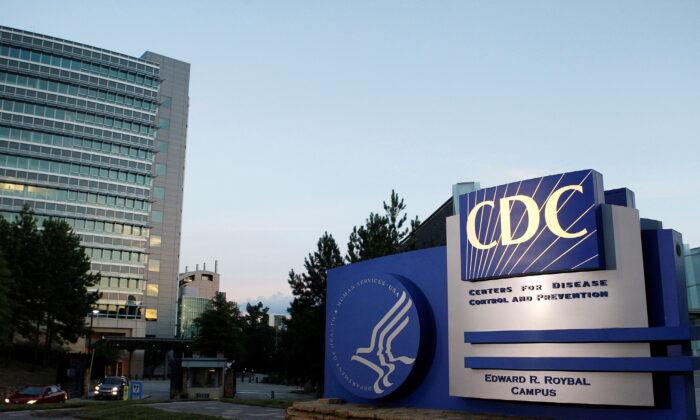A two-dose vaccination for monkeypox is now recommended for high-risk adults in the event of a monkeypox outbreak and that could be as small as a single case—at the discretion of local health authorities—the U.S. Centers for Disease Control (CDC) said on Feb. 22.
The CDC’s Advisory Committee on Immunization Practices unanimously approved the recommendation for the vaccine Jynneos despite the fact that potentially serious health risks could not definitively be ruled out.
Jynneos was approved by the U.S. Food and Drug Administration (FDA) in 2019. Nearly 1.2 million doses have been administered since May 2022.

The CDC recommendation indicates that two doses are needed, to be administered one month apart and that it takes two weeks after the second dose for the vaccine to be most effective.
Monkeypox is caused by a virus similar to the one that causes smallpox. Jynneos is approved for the treatment of both diseases.
Symptoms of monkeypox begin with flu-like symptoms such as a fever, chills, headache, fatigue, and muscle aches. Lymph nodes may also become swollen. Within a few days, a blister-like rash will appear that looks similar to chickenpox.
The rash may spread to other parts of the body but usually dries up after a week or two.
Monkeypox and chickenpox are not related.
Monkeypox is rarely fatal, experts say, but can have life-altering effects including severe scars from the blisters, and blindness.
It can spread through direct contact with rashes, scabs, or body fluids of an infected person, close contact with respiratory droplets from an infected person for four or more hours, sexual contact, or contact with bedding used by an infected person.
Vaccine Effectiveness and Side Effects
Jynneos is effective in preventing monkeypox 95 percent of the time, according to the CDC. However, It is not known how effective the vaccine is for people who have a compromised immune system.That is significant because 53 percent of U.S. monkeypox cases were in people who are HIV positive, the CDC reported.

The duration of the vaccine’s effectiveness is also unknown.
Data gathered from vaccine recipients shows that mild side effects from the vaccine were reported 62 percent of the time, ranging from redness at the injection site to fatigue (40 percent), headache (24 percent), and fever (17 percent).
Five percent reported seeking medical attention for symptoms after receiving the vaccine.
Mild side effects show that the recipient’s immune system is active and are not a sign of illness, according to the CDC.
Serious health conditions were reported after receiving the vaccine at the rate of 22 per 1 million recipients. Those conditions include myocarditis (inflammation of the heart muscle), pericarditis (inflammation of the fluid around the heart), and hives.
Two people died after receiving the vaccine, though the causes were determined to be from drowning and cocaine toxicity.
The CDC noted that the risk of developing myocarditis or pericarditis after receiving Jynneos was found to be significantly lower than recorded for previous smallpox vaccines.
A safety study on the vaccine reported that data does not suggest an increased risk for myocarditis or pericarditis following Jynneos, but the possibility of a small risk “cannot be excluded.”
2022 Outbreak
Monkeypox was first detected in monkeys in 1958 but not seen in humans until 1970. There was no large outbreak outside Central and West African countries until 2022.The first case in the United States was reported in May 2022. Since then, 30,193 cases and 32 deaths have been reported nationally. That accounts for 35 percent of cases reported worldwide.
Current data indicates that 99 percent of U.S. monkeypox cases occurred in men. Of those men, 94 percent reported recent sexual or intimate contact with a man, according to the CDC.
Fifty-three percent of Americans contracting monkeypox were also HIV positive.
The number of new daily cases peaked in Jul. 2022 at nearly 600. The current rate of new cases is 2 per day.
HHS provided $11 million to support U.S.-based manufacturing of Jynneos at Grand River Aseptic Manufacturing in Grand Rapids, Mich., starting in Aug. 2022.
Jynneos is provided free, though providers may bill private insurance, Medicare, or Medicaid if applicable.





